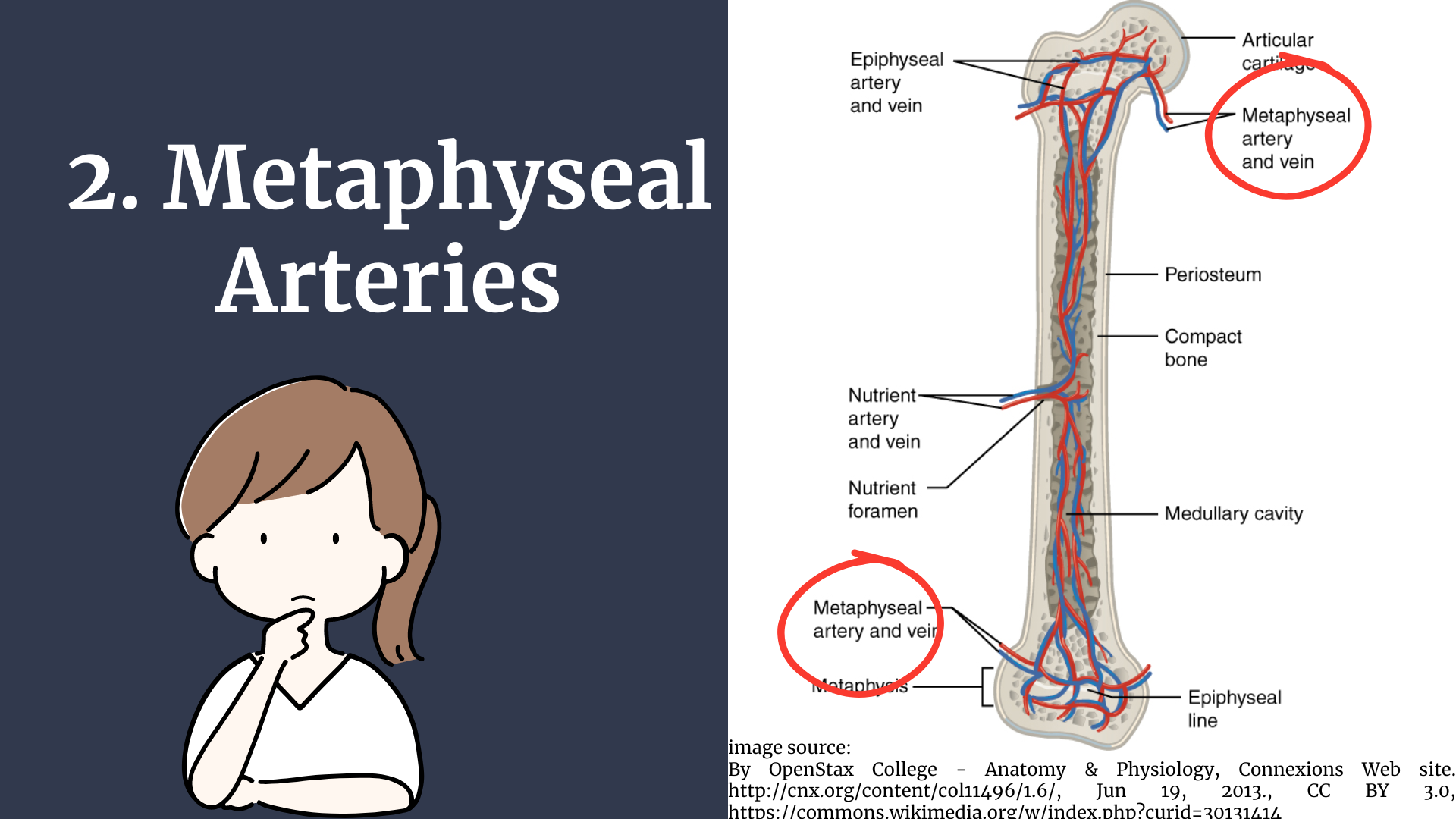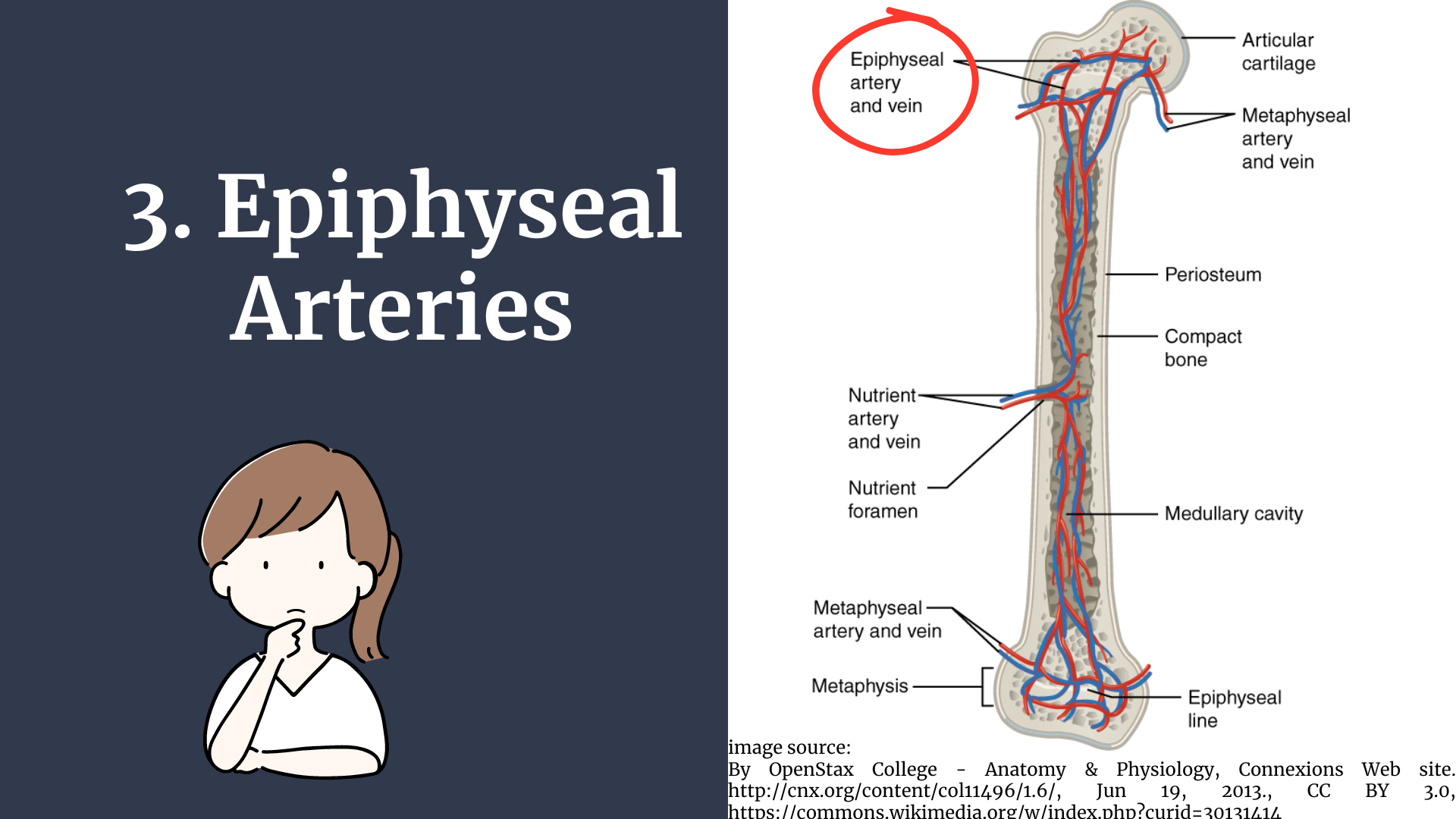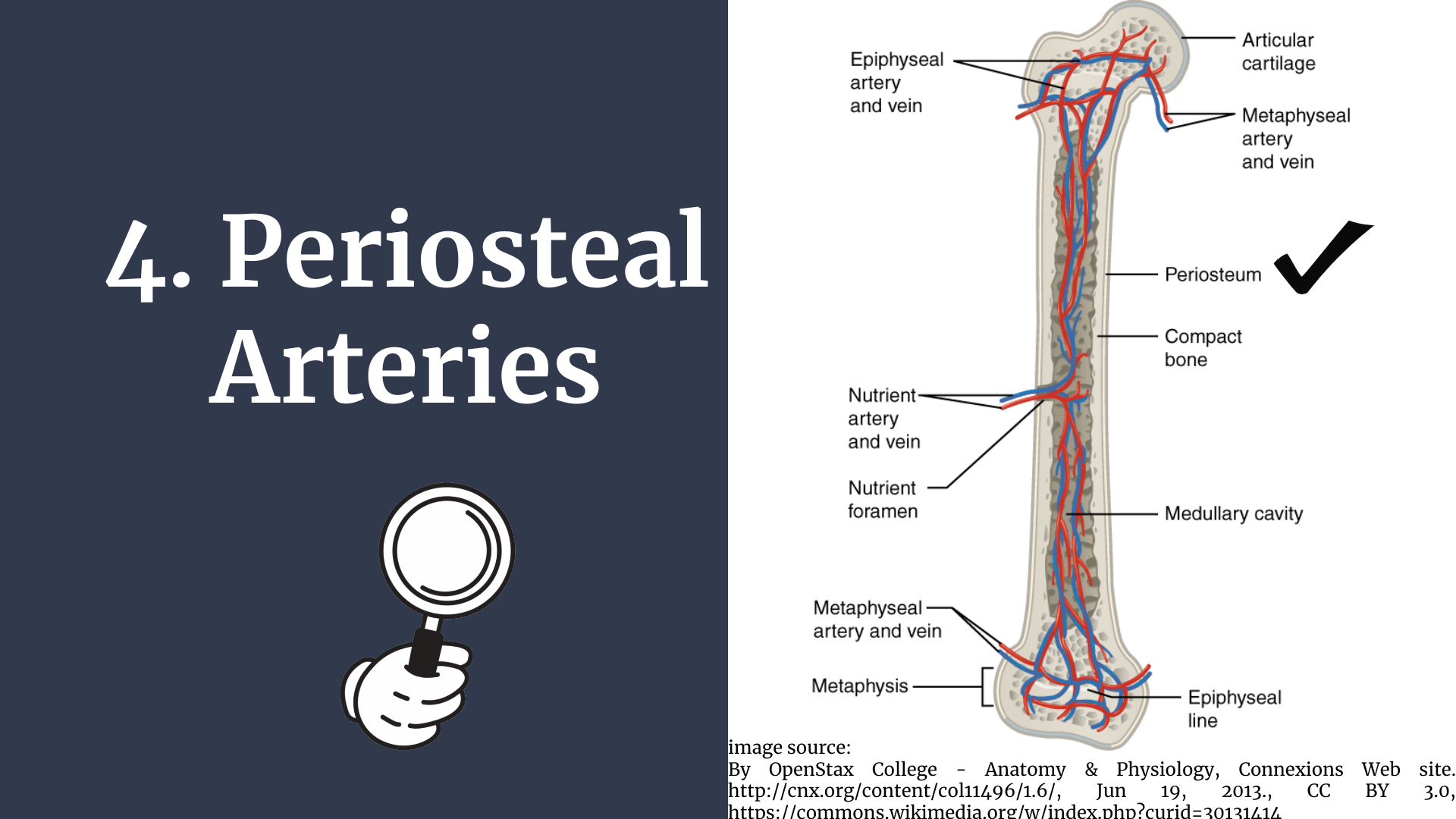Blood Supply of Long Bones
Long bones receive blood supply from four main arteries:
- Nutrient Artery
- Metaphyseal Arteries
- Epiphyseal Arteries
- Periosteal Arteries

1. Nutrient Artery
The nutrient artery is the primary source of blood for long bones. It enters the bone through the nutrient foramen, typically located near the middle of the shaft. Once inside, it travels obliquely through the cortex within the nutrient canal and reaches the medullary cavity. Here, it divides into ascending and descending branches, which are referred to as medullary arteries.
Branches of the Nutrient Artery:
- Cortical Branches: These branches of the medullary artery travel through the Haversian canals of the cortex, connecting with the periosteal plexus of capillaries located on the outer surface of the bone.
- Central Branches: These branches drain into the meshwork of medullary sinusoids in the bone marrow, which eventually leads into the central venous sinus.
- Terminal Branches: As the medullary arteries extend towards the ends of the long bones, they give rise to terminal branches. These branches either drain into the central venous sinus or anastomose with the metaphyseal and epiphyseal arteries.

2. Metaphyseal Arteries
The metaphyseal arteries originate from numerous arteries located near the ends of long bones. These arteries enter the bone through multiple vascular foramina found just inside the epiphyseal line. Once inside, they anastomose early with the medullary arteries and later with the branches of the epiphyseal arteries.

3. Epiphyseal Arteries
Derived from the anastomosis of arteries surrounding the joints, the epiphyseal arteries enter the bone at its ends through vascular foramina located outside the epiphyseal line. Within the spongy bone of the epiphysis, these arteries branch into end arterial loops that drain into epiphyseal venous sinusoids. Some of these loops penetrate the compact bone beneath the articular cartilage to reach the calcified zone of the cartilage. In adult bones, the epiphyseal arteries also anastomose with the metaphyseal arteries.

4. Periosteal Arteries
The periosteal arteries arise from the muscular arteries of the muscles attached to the long bones. These arteries form a plexus both over and within the periosteum. Branches from this plexus penetrate the cortex, anastomosing with the cortical branches of the medullary arteries in the Haversian canals. These arteries are crucial for supplying nutrients to the periosteum and the outer portion of the bony cortex.
